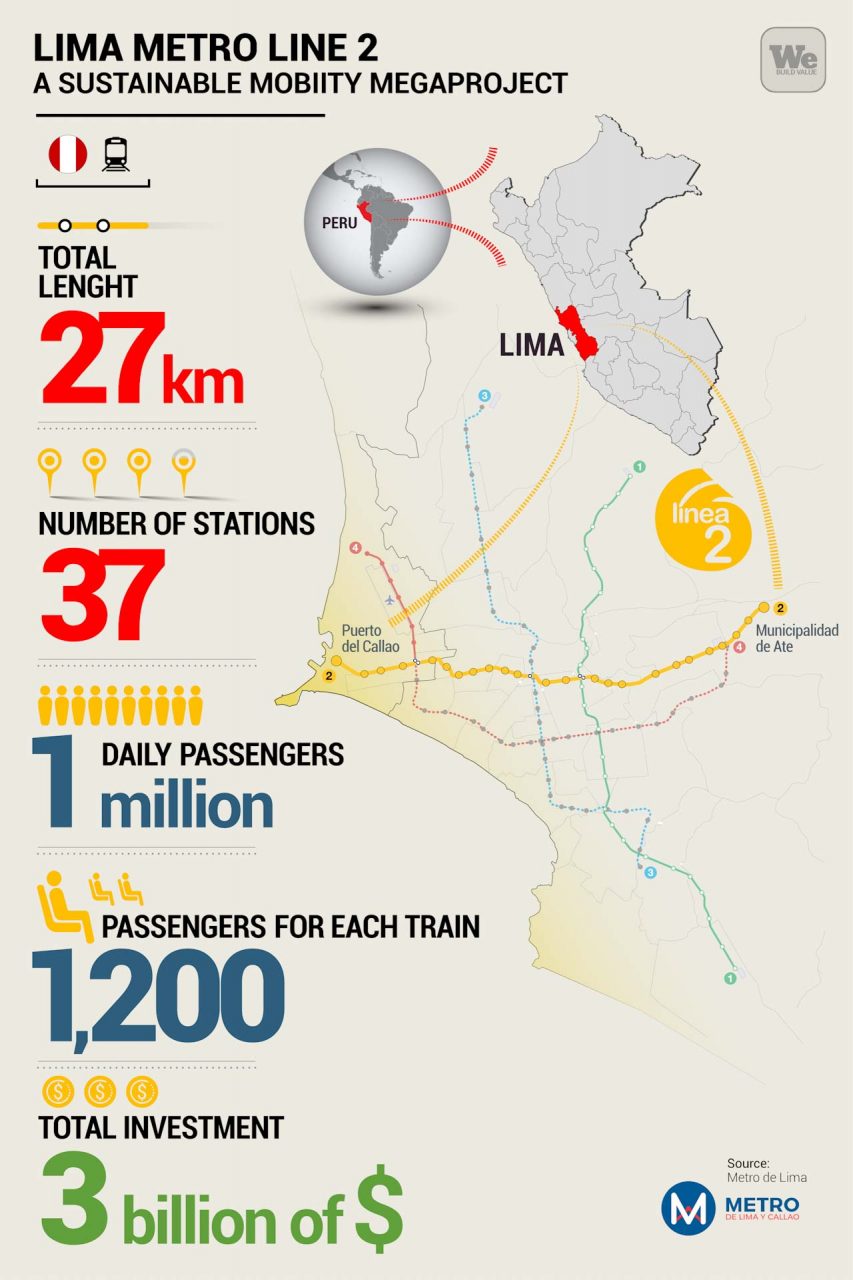Delia, the first Tunnel Boring Machine in operation on Lima’s underground, got a warm welcome at her debut. The name “Delia” wasn’t chosen at random: it’s also the name of the first Peruvian woman to graduate in mining engineering from the national university. In this same spirit, a “breakthrough ceremony” was held in the Circunvalación station of the busy San Luis district on January 26, marking the completion of excavations for the first tunnel section between the two Line 2 stations of Lima’s metro.
The line will have a huge impact locally: its 27 kilometres (16.77 miles) of tunnel stretch across the capital and connect the Ate district with Callao.
The $3 billion (€2.7 billion) project, which Webuild Group is carrying out with a consortium of European and local companies, includes the construction of a future Line 4 segment. Once completed, the new sections of the metro will facilitate transport for 1 million people per day (1,200 passengers per train), connecting 10 city districts. Most importantly, though, they will reduce travel time between Ate and Callao by two full hours (previously, the route took 2 hours and 45 minutes). The route will touch 37 stations, with 36 ventilation and emergency shafts and two train depots.
It will revolutionize mobility in Lima, which currently only has one line (the 1) for rail transport. Most residents still get around on the road and in private vehicles, causing congestion and pollution.
Lima’s metro: an opportunity for the city
Public debates around a Lima metro have been ongoing since 1972, when an initial feasibility study was conducted for a fast railway system that would connect the city with Callao (part of the greater metropolitan area). That project was approved by the Peruvian government in 1974, but it took many years for work to begin on Line 1. To date, Line 1 is still the city’s only metro line in operation.
It wasn’t until 2009 that the construction project got underway again, and on July 11, 2011, Lima’s Metro Line 1 was finally inaugurated by then-President Alan Garcia. In addition to the already-active Line 1, over the last decade, the government has presented construction plans for other metro lines in Lima (3, 4, 5 and 6), but these projects have not yet broken ground. The only major project currently underway is Line 2, important at the national level because of how it will help transform this key metropolis. Lima’s 9.5 million residents have made it the second most populous city in the Americas, and it is also the political, cultural, financial and commercial center of Peru.
Peru’s government and the infrastructure challenge
Lima is a reflection of Peru. The country is looking to take a more sustainable and durable long-term approach to its development plans, which are now back in motion after the worst of the Covid-19 crisis.
In early January, the Ministry of Infrastructure announced a new plan to cut back on delays in upgrading and expanding the network of large-scale national works, from roads to airports and bridges to railways.
In 2021, the ministry’s infrastructure allocations were $8.2 billion (€7.4 billion), already 69% more than the previous year. This year with an even bigger boost and with the announcement of government support for a number of strategic projects. In addition to the completion of Lima’s metro Line 2, these projects include the Chinchero International Airport and some other rail initiatives.
Government officials have stated that the focused 2021 effort on strategic infrastructure projects was a crucial kick-starter to boosting national development after two years of economic challenges.


